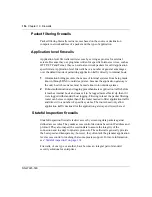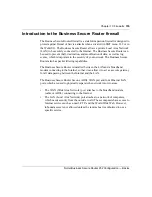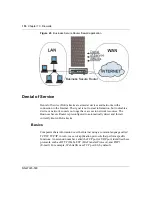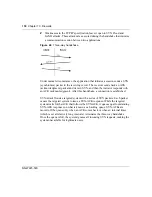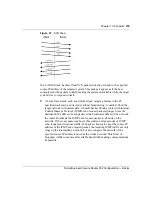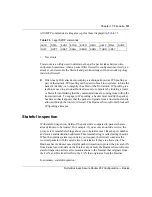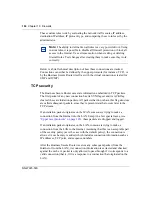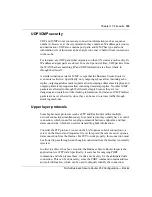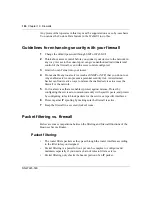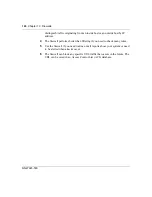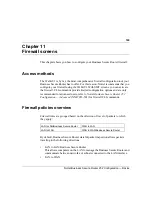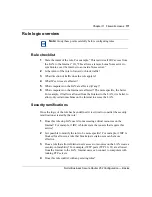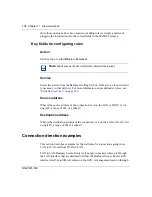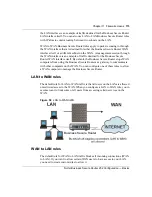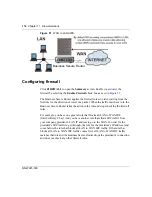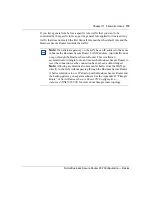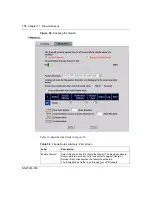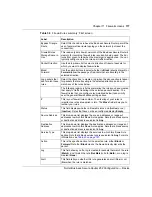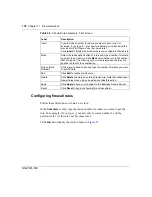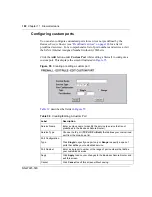
Chapter 10 Firewalls
167
Nortel Business Secure Router 252 Configuration — Basics
When to use filtering
1
To block or allow LAN packets by their MAC addresses.
2
To block or allow special IP packets that are neither TCP nor UDP, nor ICMP
packets.
3
To block or allow both inbound (WAN to LAN) and outbound (LAN to
WAN) traffic between the specific inside host or network A and outside host
or network B. If the filter blocks the traffic from A to B, it also blocks the
traffic from B to A. Filters cannot distinguish traffic originating from an
inside host or an outside host by IP address.
4
To block or allow IP trace route.
Firewall
•
The firewall inspects packet contents as well as their source and destination
addresses. Firewalls of this type employ an inspection module, applicable to
all protocols, that understands data in the packet is intended for other layers,
from the network layer (IP headers) up to the application layer.
•
The firewall performs stateful inspection. It takes into account the state of the
connections it handles, so that, for example, a legitimate incoming packet can
be matched with the outbound request for that packet and allowed in.
Conversely, an incoming packet masquerading as a response to a nonexistent
outbound request can be blocked.
•
The firewall uses session filtering, or smart rules, that enhance the filtering
process and control the network session rather than control individual packets
in a session.
•
The firewall provides e-mail service to notify you of routine reports and when
alerts occur.
When to use the firewall
1
To prevent DoS attacks and prevent hackers cracking your network.
2
A range of source and destination IP addresses as well as port numbers can be
specified within one firewall rule, making the firewall a better choice when
complex rules are required.
3
To selectively block or allow inbound or outbound traffic between inside host
or networks and outside host or networks. Remember that filters cannot
Summary of Contents for BSR252
Page 28: ...28 Tables NN47923 500 ...
Page 44: ...44 Chapter 1 Getting to know your Business Secure Router NN47923 500 ...
Page 52: ...52 Chapter 2 Introducing the WebGUI NN47923 500 ...
Page 70: ...70 Chapter 3 Wizard setup NN47923 500 ...
Page 96: ...96 Chapter 5 System screens NN47923 500 ...
Page 114: ...114 Chapter 7 WAN screens NN47923 500 Figure 27 WAN IP ...
Page 120: ...120 Chapter 7 WAN screens NN47923 500 Figure 31 Dial Backup Setup ...
Page 128: ...128 Chapter 7 WAN screens NN47923 500 ...
Page 152: ...152 Chapter 9 Static Route screens NN47923 500 ...
Page 194: ...194 Chapter 11 Firewall screens NN47923 500 ...
Page 210: ...210 Chapter 13 VPN NN47923 500 Figure 67 Summary IP Policies ...
Page 222: ...222 Chapter 13 VPN NN47923 500 Figure 71 VPN Branch Office rule setup ...
Page 256: ...256 Chapter 13 VPN NN47923 500 Figure 81 VPN Client Termination advanced ...
Page 260: ...260 Chapter 13 VPN NN47923 500 ...
Page 264: ...264 Chapter 14 Certificates NN47923 500 Figure 83 My Certificates ...
Page 270: ...270 Chapter 14 Certificates NN47923 500 Figure 85 My Certificate create ...
Page 274: ...274 Chapter 14 Certificates NN47923 500 Figure 86 My Certificate details ...
Page 282: ...282 Chapter 14 Certificates NN47923 500 Figure 89 Trusted CA details ...
Page 298: ...298 Chapter 14 Certificates NN47923 500 ...
Page 316: ...316 Chapter 16 IEEE 802 1x NN47923 500 ...
Page 320: ...320 Chapter 17 Authentication server NN47923 500 Figure 106 Local User database edit ...
Page 328: ...328 Chapter 17 Authentication server NN47923 500 ...
Page 376: ...376 Chapter 20 Logs Screens NN47923 500 Figure 150 Log settings ...
Page 386: ...386 Chapter 20 Logs Screens NN47923 500 ...
Page 393: ...Chapter 21 Call scheduling screens 393 Nortel Business Secure Router 252 Configuration Basics ...
Page 394: ...394 Chapter 21 Call scheduling screens NN47923 500 ...
Page 410: ...410 Chapter 22 Maintenance NN47923 500 ...


